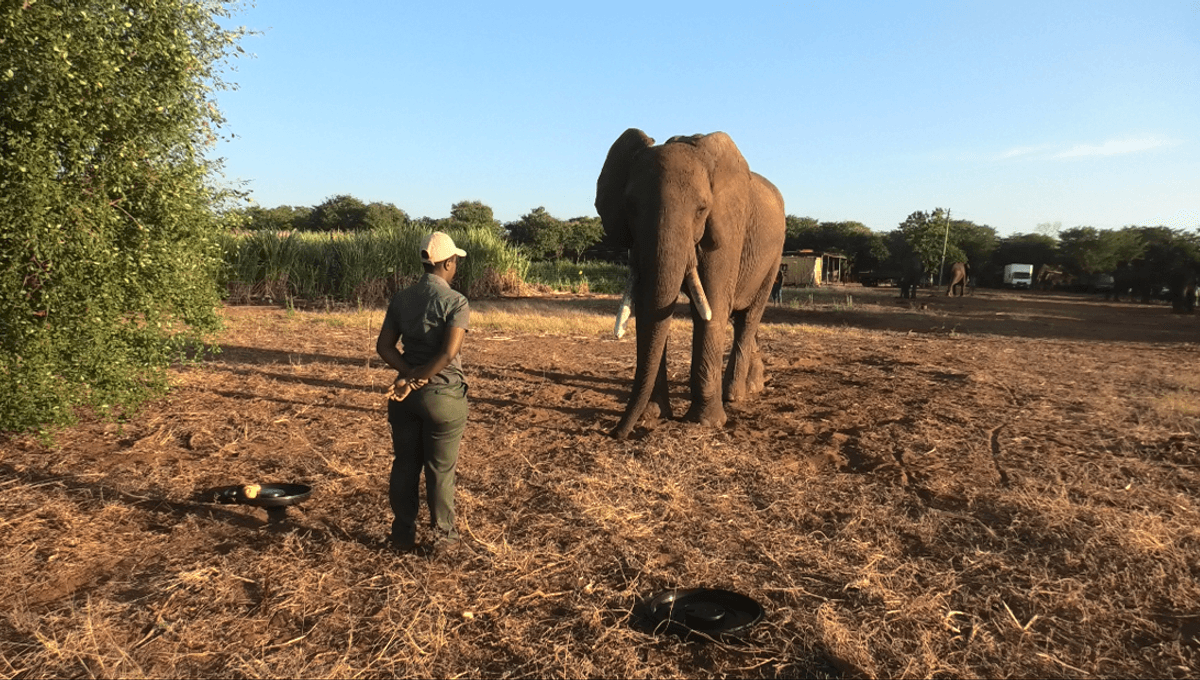
Using gestures is part of communication and language and can be found across the animal world, from fish to apes and birds. However, having more complex gestures is something that has really only been seen in primates. Researchers took a closer look at gestures in elephants to find out if they can use them to achieve a goal and understand more about the messages they are sending.
To use a gesture effectively, you need to have an attentive audience. If your gesture does not achieve the goal you had in mind when you made it, you might double down and repeat the gesture, or use it in combination with a different one to achieve your goal. These situations are known as audience directedness, persistence, and elaboration. This type of gesturing is known as goal-directed intentionality and has only been seen in primates or in very specific situations for other species.
To find out if elephants would respond in this way, the team set up a series of experiments in Zimbabwe using 17 semi-captive African savannah elephants (Loxodonta africana). One group lived at the Jafuta Reserve, while two separate groups lived at Victoria Falls National Park.
The elephants roam free during the day and are stabled together at night. The researchers split the eight males and nine females into two age categories, young adults aged 15-34 and old adults aged 35 years or older.
The elephants were presented with a tray of apples and an empty tray, both out of reach. To start the experiment, the experimenter picked up an apple from the tray and fed it to the elephant. This was then repeated two more times. The experimenter then waited 40 seconds. For the next phase of the experiment, one of three things happened. Either the elephant was presented with the apple tray and allowed to take the remaining apples; the elephant was presented with the empty tray; or the elephant was presented with the apple tray but only allowed to take one of the remaining apples.
“It was clear that they wanted the apples,” lead author Vesta Eleuteri told Science. “They’re very expressive.”
The team recorded a total of 313 gesture tokens of 38 different types from the three elephant groups. A hundred and sixty-one were directed at the experimenter, with 12 at the tray containing the apples, and 29 at themselves. No gestures were recorded for the empty tray. Only one did an elephant gesture without the experimenter present.
These findings suggest that their gestures were about getting the apples, showing that the empty tray held no interest for them. The elephants are exposed to training not associated with the experience in the area where they live, so it is possible they thought the empty tray signaled the end of the training session.
“We show that semi-captive elephants gesture in the presence of a visually attentive audience, that they persist in further gesturing when their goal was partially met, as compared with fully met, and that they elaborate their gesturing after previous communicative attempts failed to meet their goal,” explain the authors.
The team found that the elephants used more new gestures when they did not receive the apples, rather than repeating gestures they had already made. This shows persistence and elaboration.
“We provide the first evidence that semi-captive elephants use many gesture types towards a visually attentive audience, that they persist in gesturing when they do not fully meet their goal and that they elaborate their gesturing following the failure of previous communicative attempts, when communicating to ask for food. Together, this pattern of results provides the first systematic evidence of goal-directed intentionality across many gesture types in elephant communication and in non-primate,” explain the authors.
The paper is published in Royal Society Open Science.
Source Link: Elephants Use All Kinds Of Gestures To Communicate – They Just Want Apples